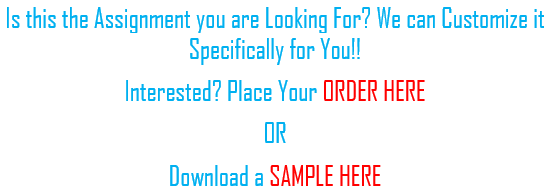TO PREPARE:
- Select a child/adolescent or adult patient from your clinical experience that presents with a significant concern. Create a focused SOAP note for this patient using the template in the Resources.
- Your presentation should include objectives for your audience, at least 3 possible discussion questions/prompts for your classmates to respond to, and at least 5 scholarly resources to support your diagnostic reasoning and treatment plan.
Video assignment for this week’s presenters:
Record yourself presenting the complex case study for your clinical patient. In your presentation:
- State 3–4 objectives for the presentation that are targeted, clear, use appropriate verbs from Bloom’s taxonomy, and address what the audience will know or be able to do after viewing.
- Present the full complex case study. Include chief complaint; history of present illness; any pertinent past psychiatric, substance use, medical, social, family history; most recent mental status exam; current psychiatric diagnosis including differentials that were ruled out; and plan for treatment and management.
- Report normal diagnostic results as the name of the test and “normal” (rather than specific value). Abnormal results should be reported as a specific value.
- Pose three questions or discussion prompts, based on your presentation, that your colleagues can respond to after viewing your video.
- Be succinct in your presentation, and do not exceed 8 minutes. Specifically address the following for the patient, using your SOAP note as a guide.
- Subjective: What details did the patient provide regarding their chief complaint and symptomology to derive your differential diagnosis? What is the duration and severity of their symptoms? How are their symptoms impacting their functioning in life?
- Objective: What observations did you make during the psychiatric assessment?
- Assessment: Discuss their mental status examination results. What were your differential diagnoses? Provide a minimum of three possible diagnoses and why you chose them. List them from highest priority to lowest priority. What was your primary diagnosis, and why? Describe how your primary diagnosis aligns with DSM-5-TR diagnostic criteria and is supported by the patient’s symptoms.
- Plan: What was your plan for psychotherapy (include one health promotion activity and patient education)? What was your plan for treatment and management, including alternative therapies? Include pharmacologic and nonpharmacologic treatments, alternative therapies, and follow-up parameters, as well as a rationale for this treatment and management plan. Discuss an identified social determinate of health impacting this patient’s mental health status and provide your recommendation for a referral to assist this patient in meeting this identified need (students will need to conduct research on this topic both in the literature and for community resources).
- Reflection notes: What would you do differently with this patient if you could conduct the session again? If you are able to follow up with your patient, explain whether these interventions were successful and why or why not. If you were not able to conduct a follow-up, discuss what your next intervention would be.
Objective:
- To understand the chief complaint and symptomatology presented by the patient.
- To analyze the psychiatric assessment findings and differential diagnoses.
- To formulate a comprehensive treatment plan, including psychotherapy, pharmacological interventions, and addressing social determinants of health.
Complex Case Study Presentation:
Objectives:
- By the end of this presentation, viewers will be able to analyze the chief complaint and symptomatology of the patient to derive a comprehensive understanding.
- Viewers will be able to evaluate the psychiatric assessment findings and generate appropriate differential diagnoses.
- Viewers will be equipped to formulate a comprehensive treatment plan, integrating psychotherapy, pharmacological interventions, and addressing social determinants of health.
Patient Information:
- Chief Complaint: The patient, a 25-year-old male named John, presents with a chief complaint of persistent sadness, loss of interest in previously enjoyed activities, and difficulty concentrating for the past six months.
- History of Present Illness: John reports a gradual onset of symptoms, exacerbating over the past few months, impacting his ability to maintain his job and relationships. He denies any suicidal ideation but expresses feelings of hopelessness.
- Past Psychiatric/Substance Use/Medical/Social/Family History: John has a family history of depression, with his mother being diagnosed with major depressive disorder. He denies any substance abuse but reports occasional alcohol use socially.
- Most Recent Mental Status Exam: During the assessment, John exhibited a sad affect, slowed speech, and poor eye contact. He endorsed feelings of worthlessness and decreased energy. Cognitive functions were intact, but concentration was impaired.
- Current Psychiatric Diagnosis: Differential diagnoses include major depressive disorder, persistent depressive disorder, and adjustment disorder with depressed mood. Primary diagnosis: Major Depressive Disorder (MDD).
- Plan for Treatment and Management: Psychotherapy involving cognitive-behavioral therapy (CBT), health promotion activities such as regular exercise, and patient education on stress management techniques will be initiated. Pharmacologic treatment with selective serotonin reuptake inhibitors (SSRIs) will be considered, and referral to community resources for financial counseling will be made to address identified social determinants of health.
Discussion Prompts:
- Based on the presented case, what additional information would you seek to refine the differential diagnoses?
- How would you tailor the psychotherapeutic approach for a patient with comorbid depression and a history of familial depression?
- In what ways do you believe addressing social determinants of health can impact the efficacy of treatment in patients with depression?
Reflection Notes: If I could conduct the session again, I would spend more time exploring John’s coping mechanisms and support system to better understand his resilience factors. Additionally, I would ensure a more thorough exploration of potential traumatic events or life stressors contributing to his depressive symptoms. Follow-up sessions would focus on assessing treatment adherence and any emerging side effects of pharmacotherapy. If successful, the interventions should lead to a reduction in depressive symptoms and improved functioning in John’s daily life.

